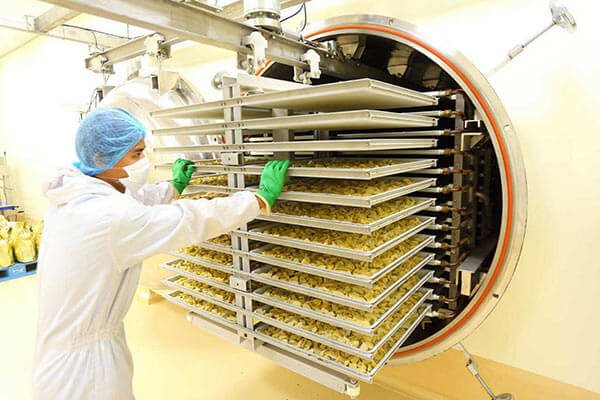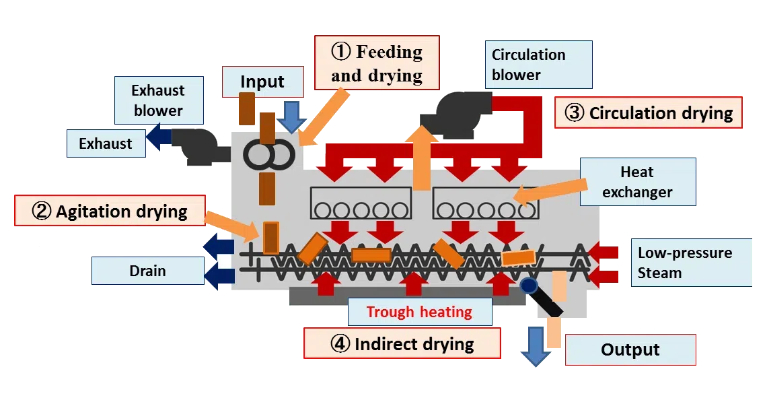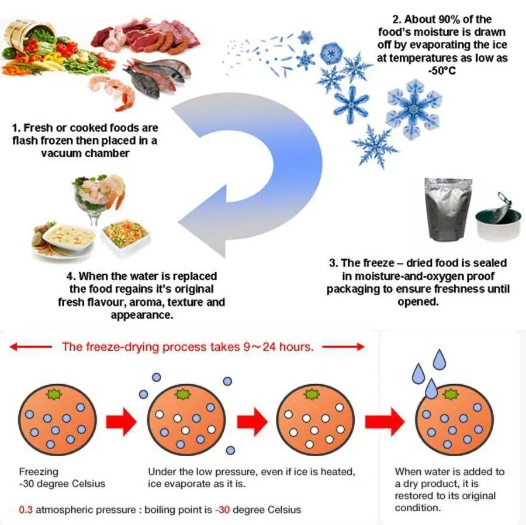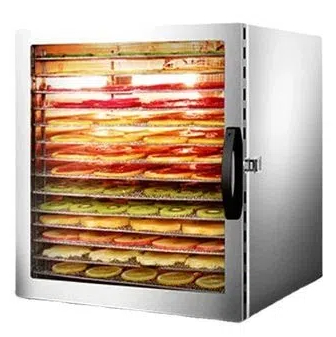
Content Menu
● Introduction
● Understanding Food Drying
● Types of Food Drying Methods
>> Sun Drying
>> Air Drying
>> Oven Drying
>> Dehydrators
>> Freeze Drying
● Heat Pump Dryers in Food Drying
● The Food Drying Process
>> Preparation
>> Pre-treatment
>> Drying
>> Cooling and Packaging
● Applications of Food Drying
>> Fruits
>> Vegetables
>> Meats
>> Herbs
● Conclusion
● Frequently Asked Questions
>> 1. What is the best method for drying fruits?
>> 2. How long does it take to dry food using a heat pump dryer?
>> 3. Can I dry meat using a heat pump dryer?
>> 4. What are the energy savings of using a heat pump dryer?
>> 5. Is food dried in a heat pump dryer safe to eat?
Introduction
Food drying is an ancient preservation technique that has evolved significantly over the years. It involves removing moisture from food to inhibit the growth of bacteria, yeasts, and molds, thereby extending the shelf life of various food items. In recent years, heat pump dryers have emerged as a revolutionary technology in the food drying industry, offering energy-efficient and high-quality drying solutions. This article explores the intricacies of food drying, the various methods available, and the advantages of using heat pump dryers in this process.

Understanding Food Drying
Food drying, also known as dehydration, is the process of removing moisture from food to prevent spoilage. Historically, this method was used by ancient civilizations to preserve fruits, vegetables, and meats for long periods. The benefits of drying food are manifold: it reduces weight for easier storage and transport, concentrates flavors, and retains essential nutrients when done correctly.
Types of Food Drying Methods
Food can be dried using several methods, each with its own advantages and disadvantages:
Sun Drying
This traditional method involves placing food in direct sunlight. While it is cost-effective, it is highly dependent on weather conditions and can lead to inconsistent results.
Air Drying
Similar to sun drying, air drying uses natural airflow to remove moisture. It is suitable for herbs and some fruits but may take longer than other methods.
Oven Drying
This method involves using a conventional oven to dry food. It allows for better control over temperature but can be energy-intensive and may not be as effective for large batches.
Dehydrators
Electric dehydrators are designed specifically for drying food. They provide consistent heat and airflow, making them one of the most efficient methods for home use.
Freeze Drying
This advanced technique involves freezing food and then reducing the surrounding pressure to allow the frozen water in the food to sublimate. Freeze-dried foods retain their original texture and flavor, making this method popular for preserving high-quality ingredients.

Heat Pump Dryers in Food Drying
Heat pump dryers represent a significant advancement in food drying technology. Unlike traditional dryers that expel hot air, heat pump dryers recycle warm air within the unit, significantly reducing energy consumption. They operate at lower temperatures, which helps preserve the nutritional quality and flavor of the food being dried.
The efficiency of heat pump dryers makes them ideal for various food products, from fruits and vegetables to meats and herbs. They can be used in both home and industrial settings, providing flexibility and scalability for food producers.
The Food Drying Process
The food drying process involves several critical steps:
Preparation
Food must be washed, peeled, and cut into uniform pieces to ensure even drying.
Pre-treatment
Some foods benefit from pre-treatment methods, such as blanching or soaking in a solution, to enhance flavor and color retention.
Drying
The food is placed in the dryer, where temperature, humidity, and airflow are carefully controlled. Monitoring these factors is crucial to achieving optimal drying results.
Cooling and Packaging
Once dried, food should be cooled before packaging to prevent moisture buildup, which can lead to spoilage.
Applications of Food Drying
Food drying has a wide range of applications, from home kitchens to large-scale food production facilities. Common foods that can be dried include:
Fruits
Apples, bananas, and berries are popular choices for drying, providing healthy snacks and ingredients for various recipes.
Vegetables
Carrots, tomatoes, and peppers can be dried for use in soups, stews, and other dishes.
Meats
Jerky and other dried meat products are made using heat pump dryers, offering a high-protein snack option.
Herbs
Drying herbs like basil, oregano, and thyme enhances their flavor and extends their shelf life.
Industrial applications of food drying are also significant, with many companies utilizing heat pump technology to improve efficiency and product quality. Case studies have shown that businesses can reduce energy costs while maintaining high standards of food safety and quality.
Conclusion
Food drying is a valuable preservation method that has stood the test of time. With the advent of heat pump dryers, the process has become more efficient and effective, allowing for better quality and energy savings. As the demand for sustainable food preservation methods continues to grow, heat pump technology is poised to play a crucial role in the future of food drying.

Frequently Asked Questions
1. What is the best method for drying fruits?
The best method for drying fruits often depends on the type of fruit and desired texture. Dehydrators and heat pump dryers are generally recommended for their efficiency and ability to preserve flavor and nutrients.
2. How long does it take to dry food using a heat pump dryer?
Drying times can vary based on the type of food and moisture content, but heat pump dryers typically offer faster drying times compared to traditional methods.
3. Can I dry meat using a heat pump dryer?
Yes, heat pump dryers can effectively dry meats, making them suitable for jerky and other preserved meat products.
4. What are the energy savings of using a heat pump dryer?
Heat pump dryers are known for their energy efficiency, often using up to 65% less energy than conventional dryers, making them a cost-effective choice for food drying.
5. Is food dried in a heat pump dryer safe to eat?
Yes, food dried in a heat pump dryer is safe to eat, provided that proper drying techniques are followed to ensure moisture is adequately removed.












